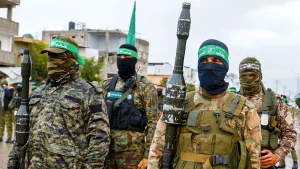Gaza Aid Vessels: A Complex Humanitarian Situation
In recent developments, several vessels have attempted to deliver humanitarian aid to Gaza, creating tension in an already volatile region. These ships, carrying essential supplies intended for Palestinian civilians, represent international efforts to address the growing humanitarian crisis in Gaza. However, the situation has been complicated by Israeli authorities, who have requested that the aid cargo be transferred to them for distribution through their established channels. This arrangement has become a point of contention between international aid organizations and Israeli officials, reflecting the broader complexities of delivering humanitarian assistance in conflict zones.
The context surrounding these aid deliveries is deeply rooted in the ongoing conflict and deteriorating conditions in Gaza. With severe shortages of food, medicine, clean water, and other necessities, international organizations and concerned nations have organized maritime missions to bring relief directly to the coastal enclave. These vessels typically carry carefully documented humanitarian supplies intended to alleviate suffering among the civilian population. The organizers of these missions often emphasize the urgent nature of the aid and express concerns about delays in distribution that might occur if the cargo changes hands multiple times before reaching those in need.
Israeli authorities have justified their request to handle aid distribution by citing security concerns and established protocols for managing goods entering Gaza. From their perspective, direct delivery of aid without proper inspection could potentially allow dual-use materials or even weapons to enter the territory. The Israeli position also reflects their broader security approach to Gaza, which includes strict monitoring of what enters the area. Officials have assured international organizations that legitimate humanitarian supplies would be promptly delivered to Gaza through established humanitarian corridors, arguing that their system ensures both security and efficient aid delivery to civilians.
For the international aid community and human rights organizations, this situation presents difficult ethical and practical considerations. Many argue that direct delivery would be more efficient and transparent, ensuring aid reaches intended recipients without delay. There are also concerns about the humanitarian principles of neutrality and independence when aid distribution becomes intertwined with one party to the conflict. These organizations point to past instances where aid has been significantly delayed or reduced when routed through intermediate channels. The standoff over these vessels represents a microcosm of the larger humanitarian challenges in Gaza, where meeting basic human needs is constantly balanced against security considerations.
The civilians in Gaza, meanwhile, remain caught in the middle of these disputes while facing increasingly desperate conditions. With infrastructure damaged from conflict, limited electricity, and restricted access to clean water, the aid aboard these vessels represents more than just supplies—it symbolizes hope and a connection to the outside world. Many families in Gaza have been displaced multiple times, lost livelihoods, and struggle daily with meeting basic needs. The politics surrounding aid delivery can seem distant and frustrating to those waiting for essential supplies, regardless of which route they take to arrive.
Looking forward, the situation with these aid vessels highlights the need for more sustainable solutions to Gaza’s humanitarian crisis. While emergency aid is crucial, most experts agree that lasting improvement requires addressing root causes: the conflict itself, movement restrictions, economic development, and infrastructure rehabilitation. International diplomatic efforts continue to seek pathways that balance legitimate security concerns with humanitarian imperatives. Until broader political solutions are found, these aid vessels—and the disputes surrounding their cargo—will likely remain a recurring feature of the Gaza landscape, symbolic of both global solidarity and the challenges of delivering humanitarian assistance in one of the world’s most complex conflicts.










